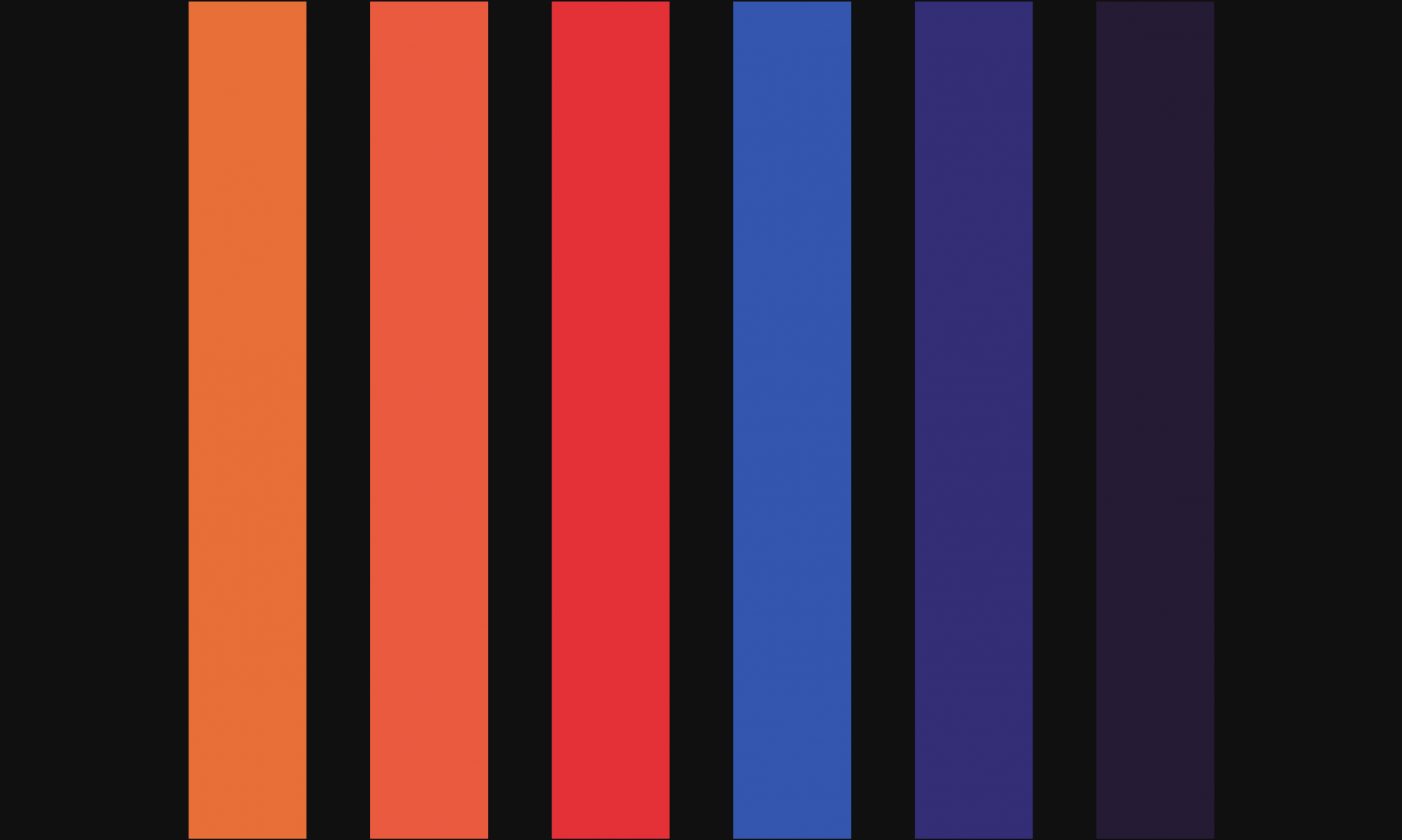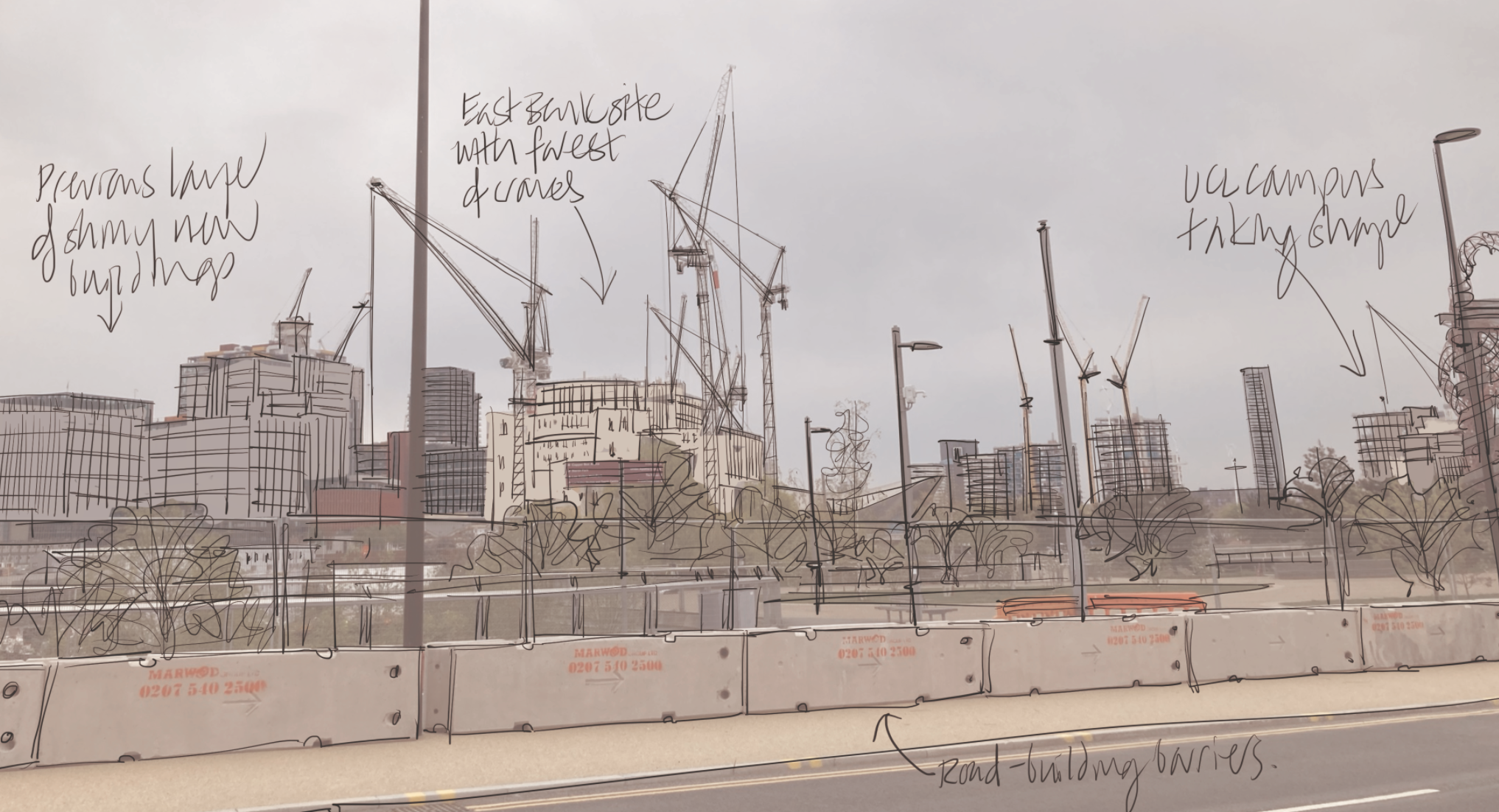
Graham Hitchen and Federico Vaz
This project by researchers at Loughborough University London investigated the impact of, and recovery from, the Covid-19 pandemic on the creative communities in and around Hackney Wick, Fish Island, and the Queen Elizabeth Olympic Park in East London. Undertaken between September 2020 and September 2021, it combined quantitative and qualitative research and pursued a novel ‘design for policy’ methodology to inform London and UK-wide policy on creative clusters. (A link to the full report, together with annexes and tools developed, can be found here.)
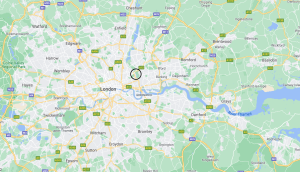
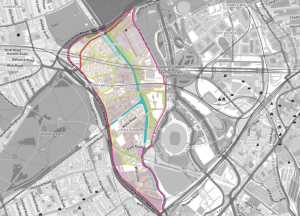
The Hackney Wick/Fish Island (HW/FI) and Olympic Park (QEOP) cluster brings together small and micro-creative businesses with large and significant creative employers (such as BT Sport and Sadler’s Wells Theatre) in a very small physical footprint. It is also home to Loughborough University London and parts of University College London (UCL), Staffordshire University London, and Liverpool Media Academy. However, despite being an area with a large number of creatives and a designated Creative Enterprise Zone, HW/FI’s organic creative economy has been at increased risk for several years.
From the available literature on the emerging impact of Covid-19 on the Creative Industries, a clear pattern was emerging of significant disruption on a sector made up of a very large number of under-capitalised small and micro-businesses. Some sub-sectors thrived – particularly games and software and digital services – others, like film, initially struggled but revived, but most other sectors ceased working or pivoted into new activities (A Jobs Crisis in the Cultural and Creative Industries, December 2020).
According to research conducted in December 2020 by the Centre for Cultural Value, in collaboration with the Creative Industries Policy and Evidence Centre (ibid), the six months following the beginning of lockdown saw the collapse in working hours across the creative industries, including 55,000 job losses in music, performing and visual arts, and drastically higher than average numbers of people leaving creative occupations compared to previous years. Meanwhile, the number of freelancers in the sector declined by 38,000 between the end of 2018 and the end of 2020, which is of concern given the creative industries high reliance on freelancers.
The existing and ongoing research provides invaluable insights and macro-level evidence to inform national policy-making on creative clusters. However, there is still a need for understanding creative economy dynamics at micro and mezzo levels to develop insights for specific and localised support measures.
Covid 19: changing communities
Working with businesses and community partners over 12 months from September 2020, this project sought to understand how Covid-19 had affected creative community activities and business models and people’s changing attitudes to their future prospects. The project was led by a steering group of local partners and brought together national and regional advisers specialising in creative cluster development. It also included a programme of collaborative workshops to develop and test new interventions and support measures. These were carried out following a design-led approach to developing public policies. Through this approach, and taking account of the research objective to understand the experience and impact of Covid-19 on activities, business models and changing attitudes, the research addressed itself to the following questions:
- How has the Covid-19 experience changed community and business interactions?
- Which (national and local) interventions have worked?
- What can we learn to shape future support/interventions to help build a more robust and agile creative cluster?
To address these questions and achieve the research aims, the researchers refined and adopted a specific approach based on immersion and design for policy. This is represented in a four-phase model which enabled engagement with the different creative communities across HW/FI and QEOP during extended phases of lockdown.

This model visualises the different stages in the research project while emphasising their iterative nature. Each of these phases implies different levels of immersion within the creative community, as well as actions and expected outputs. Separate reports were prepared on each phase: eliciting impact and insights, co-designing futures, co-designing preliminary policy ideas, and developing a prototyping framework to test those ideas. The approach allowed for the researchers’ immersion within the local creative communities and to co-develop insights that could help local agencies in developing more effective support mechanisms.
In addressing the project’s research questions, the researchers looked at:
- Assessing how businesses in the cluster were affected by the Covid-19 pandemic and their plans for recovery and future growth;
- Evaluating the impact of Government and other interventions to support small businesses;
- Providing insights into the impact of Covid-19 on entrepreneurial attitudes among the creative business communities;
- Providing insights into the impact of Covid-19 on the broader ecosystem including local support networks;
- Capturing secondary research of the impact of Covid-19 on other businesses and clusters in London and nationally;
- Influencing future policies to support more resilient creative clusters;
- Working with the GLA and other regional partners to inform policy and interventions in London over the coming years.
Citizen Science research
During Phase 1, a piece of complementary research in the form of ‘citizen science’ (CS) was conducted in partnership with local, community interest social enterprise Creative Wick.
The results show that – much like the national trend identified by the Centre for Cultural Value and the PEC — the music, performing, and visual arts sub-sectors appear to have been hit the hardest. Most significantly, however, as a result of the restriction measures, nine out of ten participants have adapted their activities, with about half working from home during the pandemic. This relatively swift adaptation is reflected in responses to questions regarding new business activity, with almost 40% of the respondents declaring to have developed new services during the crisis. In addition, and perhaps most significantly, the CS research revealed that half of those people and businesses surveyed claimed to be better prepared to deal with future Covid-like challenges.
There was a marked difference in impact between businesses in HW/FI and those in Here East. To a large extent, these differences in impact are linked to the organic vs artificial growth in the local creative businesses. Whereas the majority of creative businesses in the QEOP have been located or relocated to the area as part of different efforts to revitalise the Park and its environs, including infrastructure development, and diverse support measures, the creative communities in HW/FI (especially those in live/work spaces) pre-date these developments and form part of the area’s original organic growth and the availability of large spaces for developing varied creative expressions. That is, whereas the former can be linked to specific redevelopment policies, the latter developed for lack of them.
Meanwhile, in terms of accessing Government and other support, one of the most problematic aspects highlighted by the surveys is the lack of awareness around the government support services offered (local or central). Mainstream grants and support measures were either not taken up or not deemed useful, compared to much more localised, sometimes volunteered and self-help, measures.
Impact and insights
- The area is not a ‘cluster’ so much as a community or group of communities;
- The existence of a large informal economy;
- There is a physical and cultural divide between some of the communities;
- The impact of Covid-19 amongst creative sub-sectors was uneven, including on living as well as working conditions;
- Some local creative communities are tired and financially stretched;
- Many local creative people and businesses had been able to adapt and change their business models and practices;
- Especially in HW/FI, adaptability was possible due to self-help networks, which, on many occasions, proved more effective than official government networks;
- The last decade has seen an increase in pressure on affordable workspaces for creatives in HW/FI, which threatens the survival of some of its creative communities. With the arrival of new creatives (especially to the QEOP), the physical requirements for these workspaces have also changed.
- These new creatives also bring new knowledge and specific skill sets that are not always abundant or available locally. In the future, there will be a need to ensure local talent is developed to feed these new creative sub-sectors. Big organisations, including local HEI, will need to play a role to strengthen the creative communities in HW/FI and the QEOP.
- This will require strengthening the current and development of new local networks that facilitate the exchange of knowledge and resources.
- Crucial to the flourishing of social and business local networks is the existence of appropriate spaces to work, meet, trade, exchange, learn, and live.
Through subsequent phases, these insights were tested and developed, including a ‘design futures’ session which explored preferred future scenarios, and the kind of interventions needed to help realise them. The aim was partly to investigate the impact of existing interventions but also to explore what might be needed in the future to help the cluster evolve and grow out of the pressures and challenges created by the pandemic.
The third and fourth phases involved collaboration between creatives, policy-makers and other stakeholders to generate preliminary policy ‘solutions’ and then to begin to test and prototype those solutions.
Findings and recommendations
Through this project, the researchers looked at gaining an understanding of how the Covid-19 crisis changed the community and business interactions, the effectiveness of national and local interventions on the local creative businesses, and generating insights into how to shape future support mechanisms for a more robust and agile creative sector.
For a number of companies and sectors, the strictures on physical interaction accelerated a trend towards digital, with companies seeking to provide services and experiences remotely. Indeed, as became evident in Hackney Wick, Fish Island and the Olympic Park, the pandemic facilitated the development of new practices and services and, in some cases, new business models, as companies adapted and developed entirely new ways of working. Similarly, a report by the Creative Industries Policy and Evidence Centre focusing on museums and galleries highlights a trend that became a feature of a number of other sectors: “Some people reported that this pivot forced their organisation to change for the better, transforming how they engage with audiences and plan for the future.” (Kidd, Nieto McAvoy, Ostrowska, 2021).
That process of adaption was very evident among the group we engaged with, and there is considerable evidence of business re-orientation and a remarkable positivity about the future.
Nevertheless, it is important to state that the Covid-19 pandemic has had a dramatic and mainly negative impact on the creative communities in HW/FI and the QEOP. The creative communities in the area of study have also been subject to increasing pressure from the redevelopment associated with the 2012 Olympic Games and its consequent gentrification process, which has continued unabated. However, this impact has been substantially different for the creatives at each side of the Hackney Cut. Whilst many of the creative businesses at the QEOP have managed to adapt their business models, a large number of the creatives in HW/FI have struggled to pivot their businesses fully. Although this does not mean creative businesses in the QEOP have not suffered from the pandemic, in many cases the nature of their activities and other factors has meant, in general, a very dissimilar impact to those in HW/Fi, with some companies in the videogames sub-sector, for example, doubling in size during this period (Here East Impact Report, 2021).
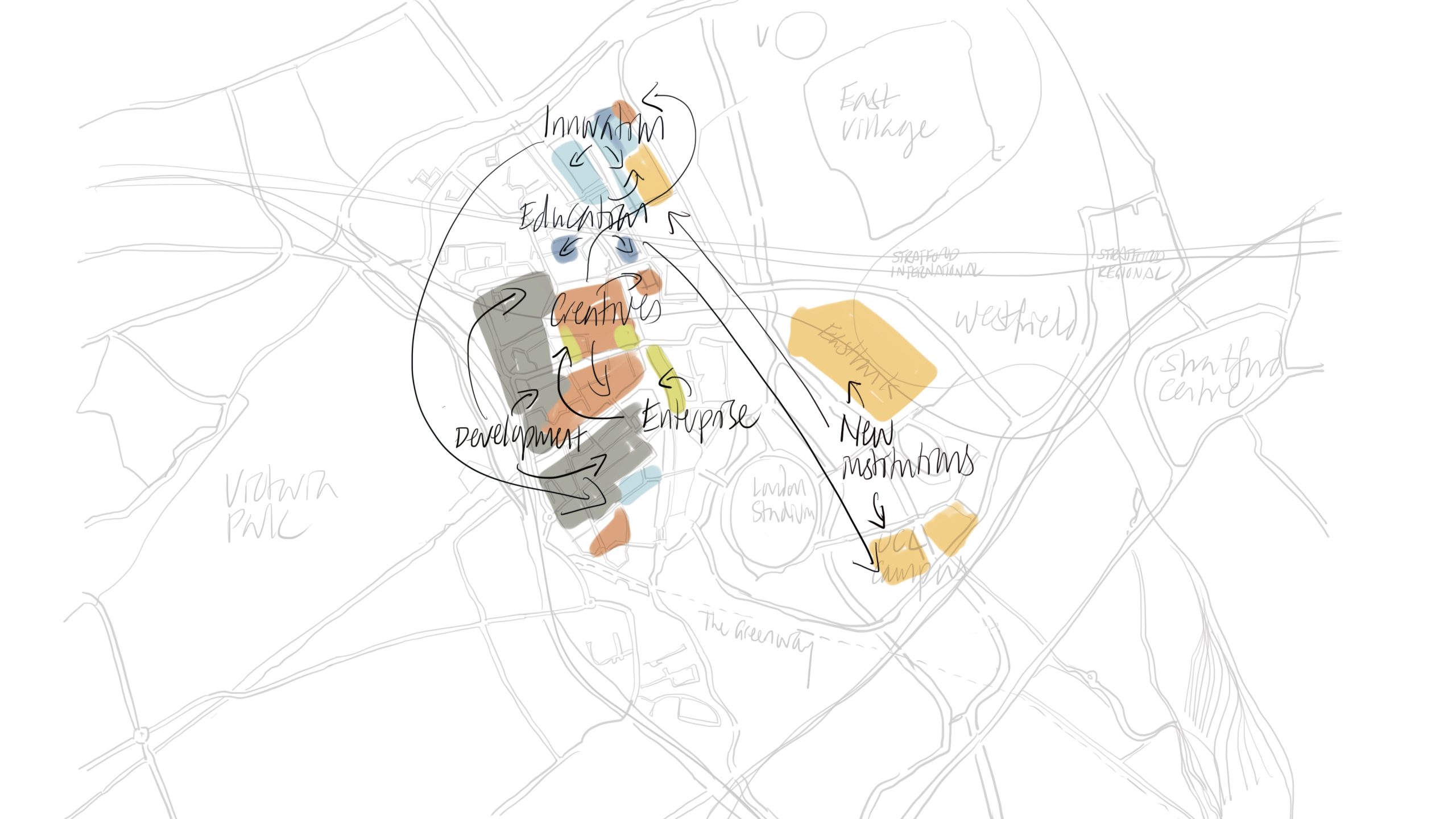
What’s clear, however, is that the way in which businesses adapted was not necessarily assisted by government intervention. Some blanket policies failed at addressing particular issues of the local creative communities, primarily by ignoring that their creation is linked to very specific contextual conditions in the first place. For example, some of the creatives in HW/FI currently operate in precarious conditions and are ineligible for some specific forms of governmental support, such as the Job Retention Scheme. A more profound understanding of the characteristics of these communities is needed to provide support measures able to alleviate their shortcomings. An example of how this can be tackled is ‘Wick Freelancers’ – a new, free “peer-to-peer business support programme for creative freelancers based in and around Hackney Wick & Fish Island who want to
- Adapt and thrive post-lockdown
- Build a supportive network of like-minded freelance and self-employed creatives
- Create space for strategic thinking and problem solving.”
(HWFI Creative Enterprise Zone, 2021)
The programme launched by HWFI Creative Enterprise Zone in collaboration with ECHO in August 2021 implicitly acknowledges the deficiency of the national measures in supporting some of the local creatives and looks at complementing them by offering a specific programme resulting from the understanding of the local conditions and the synergies between local organisations. Launched some 17 months after the first lockdown was announced, it reflects the understanding of local creative communities needs and proposes an innovative solution. Furthermore, the programme was communicated through official and unofficial channels, especially in local forums and networks, thus ensuring reaching members of the local communities for which the source’s legitimacy is often as relevant as the message itself.
This intervention and the way in which it has been devised and communicated is an example of a more effective measure aimed at facilitating the adaptation and re-orientation required as a result of the various pressures and challenges brought about by the pandemic. Within this, recognition of the existence of gatekeepers and valid local interlocutors within creative communities is crucial to fostering constructive dialogues and strengthening their resilience. Moving forward, agencies such as the CEZ are likely to play a pivotal role in supporting creative community resilience and growth. Meanwhile other local actors, such as the Hackney Wick and Fish Island Community Development Trust, could have a more prominent role in articulating and amplifying the local creative communities’ voices and acting as a civic forum.
The central difficulty agencies face in supporting local creative communities in areas such as HW/FI is recognising that the precarious conditions in which they have grown organically are often at odds with existing regulation. To overcome this barrier, special regulatory frameworks could be adopted, such as those that might be feasible within designated Creative Enterprise Zones. This would allow for a higher degree of policy experimentation whilst acknowledging that some of the factors that made the formation of those creative communities possible are linked to market failures and other difficult-to-replicate contextual conditions. To that extent, adopting more agile and experimental policy-making skills and resources, and making more effective use of vehicles such as CEZs could help develop more effective policy instruments and interventions.
December 2021
The full report and annexes from this research study can be found here.
